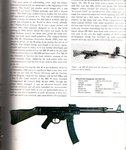parsifal
Colonel
Got proof ?
I've already shown that there's nearly no difference between the two's terminal ballistics..
No you havent. What youve shown is that you dont understand how to calculate hitting power. Dont make claims that you cant substantiate

